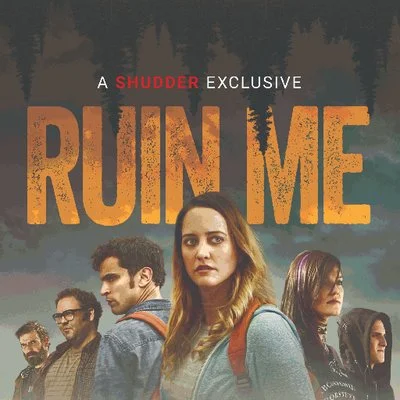Gonjiam Scared Me
When Logan Paul went into Aokigahara forest, filmed a dead body and posted it on YouTube, I knew things had changed. For years, page views became the white whale that YouTubers chased. But this felt different. How obsessed over viewership could you be in order to film something like this? The popularity of YouTube and the idea of filming everything plays directly into found footage films. In a way, YouTubers who vlog their entire life kind of legitimizes the found footage film technique.
With the exception of some outliers, I’m not typically a fan of this technique. Oftentimes, found footage comes across cheap and lazy. The scares become rote and painfully telegraphed. The camera will focus on something, pan away, then come back and (gasp!) the item/object/person has moved! Then they all head the same direction to the same ending. Rinse and repeat. For me, the success of found footage is directly proportional to how much I believe the characters would continue to film while the shit hits the fan. I can’t imagine a world where I would continue to film, while my friends all died around me. But then we have Logan Paul, so…
Facts Are Facts
Writers: Beom-sik Jeong, Sang-min Park
Director: Beom-sik Jeong
Gayly: effective and surreal scares
Dreadful: occasionally over-acted
Pairs With: Session 9
Availability: VOD
Here we have Ha-Joon, the owner of a YouTube channel devoted to exploring and filming horrific places, called “Horror Times.” He sees a video of two teenage boys exploring the abandoned asylum Gonjiam. They were, of course, broadcasting it and the feed went dark after they tried to open the infamous door to Room 402. Ha-Joon decides to get together a group of six people to go to the asylum and live-stream their experience. And so the cast travels to the hospital, sets up camp in the woods beside it and install motion-sensing cameras within the asylum.
While Ha-Joon stays in the camp to direct the group and control the broadcast, the rest of the cast heads into the asylum to hopefully film ghostly occurrences. The live-stream will culminate with the opening of Room 402, a door that has reportedly never been open. Strange things start to happen and the live viewers start to accumulate with each twist and turn, fueling Ha-Joon’s obsession with pushing further, even though the rest of the group doesn’t want to.
Gonjiam: Haunted Asylum is a fictionalized take on a real asylum in South Korea. In 2012, CNN Travel called Gonjiam one of the seven freakiest places in the world. In fact, prior to the release of this film, the owner of the asylum filed a lawsuit to keep it from being shown in theatres, claiming it’d have a negative impact on selling the building. This brings a heightened sense of reality to the proceedings. While it’s not being billed as a real event like The Blair Witch Project, the influence is obvious. Haunted Asylum stars a bunch of new actors using their own names for their characters. This gives the story a more realistic and naturalistic feeling. They really do feel like the vloggers you’ll see on YouTube. Sometimes, the over-reactions to the creepy happenings toward the beginning get in the way of building tension; however, YouTubers like PewDiePie and his ilk often have incredibly heightened reactions to horrific things, so it might not be far from the truth.
The thing about Gonjiam: Haunted Asylum is that it’s incredibly effective at times. A few moments are absolute standouts for found footage. One such example involves a character trapped in a room, with her camera and light exposing something that would feel right at home in Silent Hill. The tension of that sequence, as she tries to slowly make her way to a door is incredibly taut and effective. In fact, Haunted Asylum is at its most effective when it delves into more surrealistic situations. One image involving a woman mutter-whispering gibberish still lingers in my mind. Some of the camera tricks are surprisingly inventive and it did a great job of making me jump at times. The movie begins as a slowburn and spends a good chunk establishing the characters and the ins-and-outs of setting up a shoot like this. But as the weird things begin to accumulate, the pacing picks up until it races to the finale.
It’s also slickly edited and choreographed, using a variety of types of cameras and angles to great effect. From reaction cameras to GoPros to drone shots to stationary cameras, everything is captured from multiple perspectives and seamlessly edited together. It feels very “kitchen sink,” but it actually works in its favor. With all of the cameras capturing the events, the filmmakers are able to surprisingly de-emphasize the found footage nature of it. I liked that I forgot for stretches of a time that I was watching a found footage film. It’s rare when the artiface disappears and you forget you’re watching a first person perspective. I mentioned that I don’t like found footage films. But, once in awhile, a movie comes along that does everything incredibly well.
Gonjiam: Haunted Aslyum is that movie.
Yes, the story has been done before. Yes, this type of filmmaking has languished since The Blair Witch Project, Paranormal Activity and [Rec] effectively established the modern version of this technique. But sometimes all of the right pieces come together and it can subvert expectations. I have watched three new found footage movies this year and this is the first one (in a number of years, let alone this one) that I found actually compelling. Give it a chance.







